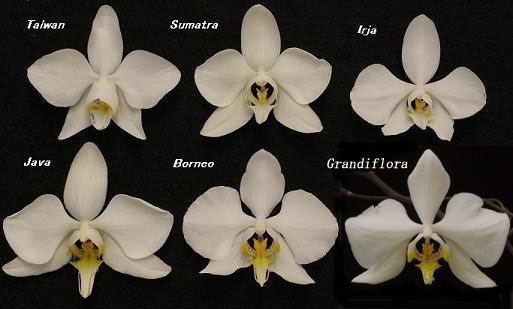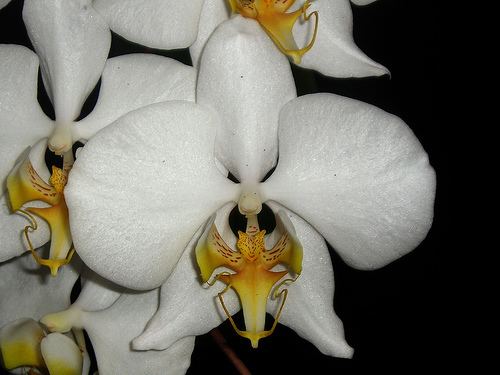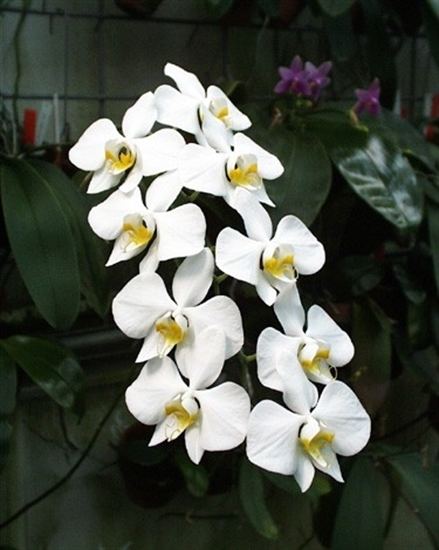Kingdom Plantae Family Orchidaceae Genus Phalaenopsis Scientific name Phalaenopsis amabilis Rank Species | Order Asparagales Subfamily Epidendroideae Subgenus Phalaenopsis Higher classification Moth orchids | |
 | ||
Similar Orchids, Moth orchids, Singapore orchid, Dendrobium, Coelogyne pandurata | ||
Phalaenopsis amabilis species orchid native to indonesia
Phalaenopsis amabilis, commonly known as the moth orchid, is a species of orchid.
Contents
- Phalaenopsis amabilis species orchid native to indonesia
- Phalaenopsis amabilis species orchid
- Taxonomy and nomenclature
- Description
- Importance
- References
Phalaenopsis amabilis species orchid
Taxonomy and nomenclature

It was first discovered on a small island off the east coast of New Guinea by the botanist Georg Eberhard Rumphius in 1653; however, he named it Angraecum album majus. It remained undiscovered until 1825 when Karl Ludwig Blume discovered the same species and gave it the name it is known by presently. This species is usually found in the eastern to southeastern regions of Asia. Plants in this genus are typically widespread in the areas of eastern Asia, such as China and Indonesia.
Description

Plants of this genus have a uniform structure that makes the identification easy for novice botanists. Phalaenopsis amabilis, like most of the other species in this genus, has a short stem. This is believed to be an adaptation to gain the light requirements needed to grow, according to Christenson. The rooting of P. amabilis is usually unbranched. The only times it would be branched are if the roots are damaged or if the individual has gotten old in age. The leaves of P. amabilis vary from oblong to elliptic at the base and obtuse, minutely, at the tip or apex and measures at 50 × 10 cm. The moth orchid's flower is showy, membranous, white, the lip, (the unpared petals of an orchid) which is three-lobed, and the callus are a variety of yellow and red depending on the individual plant. It is able to bloom for a long period of time and can grow up to 10 cm in diameter and more.

Phalaenopsis amabilis reproduces sexually through pollination. This plant grows its flower to attract the pollinator. It is generally pollinated by large carpenter bees from the genus Xylocopa. For this particular species in the Phalaenopsis genus the pollination frequency and success rate is high (about 50%).

P. amabilis and the other species in the same genus grow naturally in three distinct habitats. The first is in seasonally dry areas, then seasonally cool areas and last constantly moist or humid areas (Christenson), developing adaptions for each habitat. For the seasonally dry habitats, Phalaenopsis species have an extreme adaptation in which it adopts deciduous habits, losing its leaves. They do this because in dry habitats, leaves are a serious liability when water isn't easily accessible. This adaptation typically occurs in species found outside the Himalayan region. For the habitats that are seasonally cool areas, the species found there are all deciduous or semi-deciduous in nature which means these plants have a strong dormant rest period. In this dormant period, the plants have protection from the cold due to the high carbon to nitrogen ratio and low water content on the leaf tissue. The constantly moist and humid habitats are the most common places that someone can find many of the Phalaenopsis species. In this habitat, the species grow in the canopy evergreen forests. Because they grow in the canopy, the species' adaptation is growing leathery leaves to prevent desiccation and so that the plants can tolerate higher light levels than other species.

According to Dressler, the plants of this family are thought to be closely related to plants that would have been classified in the Liliaceae or the Amaryllidaceae families. This is the largest flower in the genus. When it was discovered, the name it has now was misapplied because it was constantly mistaken for the P. aphrodite so before it was called P. grandiflora.
Importance

Phalaenopsis amabilis (Indonesian: anggrek bulan meaning "moon orchid") is one of the three national flowers in Indonesia, the other two being the sambac jasmine and padma raksasa Officially recognized as national "flower of charm" (Indonesian: puspa pesona) in Presidential Decree No. 4 in 1993,
In China, the orchid stood for refinement, friendship, perfection, numerous progeny, all things feminine, noble, and elegant.

